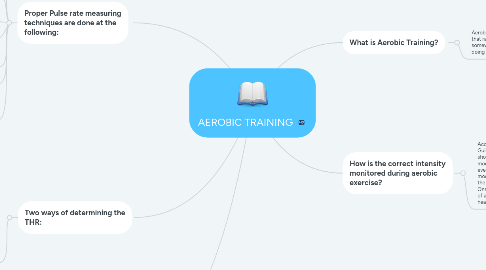
1. Proper Pulse rate measuring techniques are done at the following:
1.1. Apical site
1.2. this is taken at the apex of the heart and can sometimes be felt very clearly by placing the heel of the hand over the left side of the chest.
1.3. Carotid pulse site
1.4. taken from the carotid artery just beside the larynx using light pressure from the tips of the pointer and middle fingers.
1.5. Radial pulse site
1.6. taken from the radial artery at the wrist, in line with the thumb, using the tips of the pointer and middle fingers.
1.7. Temporal pulse site
1.8. this pulse can sometimes be obtained from the left or right temple with light pressure from the tips of the pointer and middle fingers.
2. Two ways of determining the THR:
2.1. • MAXIMUM HEART RATE (MHR) METHOD: - method is very common and easy way of determining THR. To use this, determine first the MHR either through maximal stress test or the age adjusted formula: (Age - estimated MHR = 220 - Age) - the THR is more accurate when using a measured MHR than the age-adjusted formula. According to the MHR method a moderate intensity exercise would elicit heart rate from 55% to 70% represents moderate intensity while a heart rate from 70% to 85% is classified as vigorous.
2.1.1. Another way of monitoring intensity is to use a subjective method called BORG'S RATINGS OF PERCEIVED EXERTION (RPE) . Studies show that this subjective rating is strongly correlated to heart rate and other indicators of physical exertion. The rating scores range between 6 (no exertion) to 20 ( maximal exertion) . According to American Heart Association , moderate intensity exercise would have an RPE score of 12-14 while vigorous exercise would get a score of 15-17. Another subjective method is through talk test. Exercise performed moderate intensity would result to a light sweat whilst still be able to converse. A very strenuous exercise results exercise results to rapid breathing rate and an individual would not be able to talk without pausing.
3. What is ideal duration and frequency when designing an aerobic exercise?
3.1. The Physical Activity Pyramid for Filipinos recommends aerobic exercise between 3 to 5 times every week for 30 to 45 minutes. This recommendation was made for adults not for adolescents. The Philippine National Guidelines on Physical Activity recommends a 40 minutes moderate-intensity structured activity plus a 20-minutes vigorous high-impact play. Aside from these recommendations, it is also important to consider the current fitness level and the intensity of the aerobic exercise to be performed. Aside from considering the fitness level and training experience, the intensity of the activity should be taken into consideration. Some forms of aerobic training are too intense that they cannot be performed for prolonged periods.
4. What is Aerobic Training?
4.1. Aerobic training exercises are any activities that raise heart rate and make breathing somewhat harder. The activity you are doing must be constant and continuous.
4.1.1. Examples of Aerobic Activities are:
4.1.2. Walking or Hiking
4.1.3. Jogging or Running
4.1.4. Biking
4.1.5. Swimming
5. How is the correct intensity monitored during aerobic exercise?
5.1. According to the Philippine National Guidelines on Physical Activity, adolescents should engage in a total of 60 minutes of moderate to vigorous physical activities everyday. An exercise performed at moderate to vigorous intensity will elevate the heart rate and breathing significantly. One of the best ways to set correct intensity of an exercise is by computing the target heart rate (THR).
5.1.1. Finding the Heart Rate
5.1.2. Accurate measurement of exercise heart rate is crucial in monitoring exercise intensity.
5.1.3. Although, digital heart monitors are available and are reasonably accurate, performing pulse rate measurements is still encouraged.

